The Conference for Video Engineers
October 13, 2016 • San Francisco, Ellation HQ
Waiting List
Tickets are currently sold out, but joining the waiting list
will get you first priority on any additional tickets
released. We will be streaming
on Twitch
all day from 9am - 5pm.


The Speakers
-
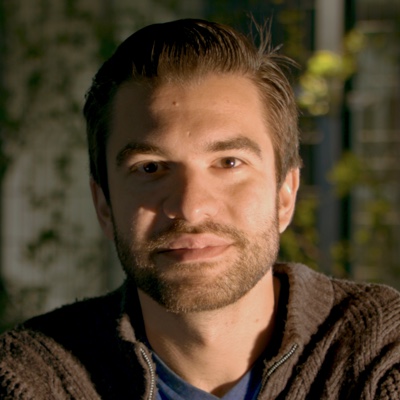
Steven Robertson
YouTube
Why People Really Abandon Playbacks
Talk Overview -

Andrew Scherkus
Google
Developing VR Media Technologies
Talk Overview -

Anne Aaron
Netflix
Measuring Perceptual Video Quality at Scale
Talk Overview -

Nick Chadwick
Mux
WebRTC: From The Ground Up
Talk Overview -

Dan Schultz
Archive.org
Popcorn Reborn! Open Video Editor from Mozilla mashes up with the Internet Archive
Talk Overview -
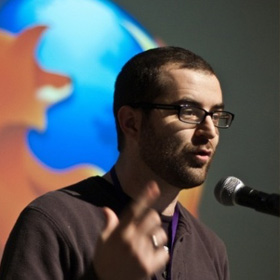
Ben Moskowitz
IRC
Popcorn Reborn! Open Video Editor from Mozilla mashes up with the Internet Archive
Talk Overview -
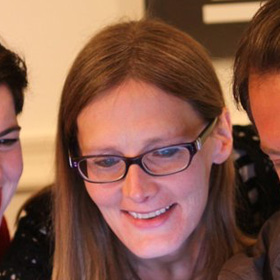
Tracey Jaquith
Archive.org
Popcorn Reborn! Open Video Editor from Mozilla mashes up with the Internet Archive
Talk Overview -
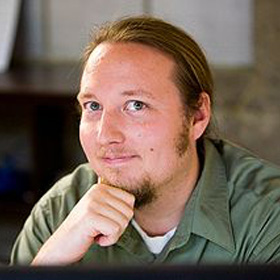
Brion Vibber
WikiMedia
ogv.js: Rebuilding the Web Video Stack From Scratch in JS
Talk Overview -
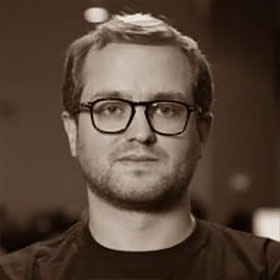
Nuno Pinge
JW Player
DASHing Into the Wild with VP9
Talk Overview -
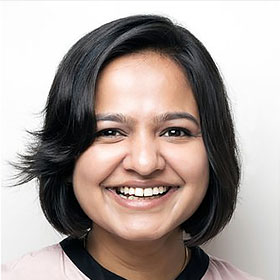
Pooja Madan
JW Player
DASHing Into the Wild with VP9
Talk Overview -
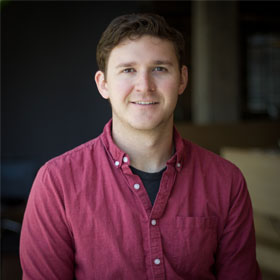
Adam Brown
Mux
Hardware Encoding in a Container
Talk Overview -

David LaPalomento
Brightcove
In a Perfect World: Why Media Sources Are a Hassle
Talk Overview -
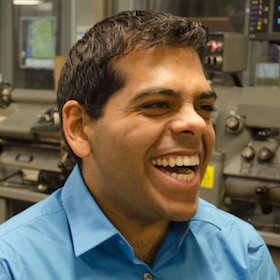
Jai Krishnan
Google
An overview of AOM: The Alliance for Open Media
Talk Overview


Adam Brown
Mux
Running FFmpeg in a docker container is cool, but what happens when you want to leverage hardware encoding technologies such as Intel QuickSync and Nvidia NVENC with docker?
What are the considerations for the host OS and how do these technologies play with existing docker deployment /orchestration tools. Are there performance or feature restrictions, and is it even worth the effort?

Andrew Scherkus
I work on Google's VR team leading our multimedia efforts. For the past two years we've been busy figuring out how best to produce, serve, and playback spatial audio and video. During that time we've realized that there are little-to-no standards for any of this stuff and that it really inhibits the creation and distribution of content.
This talk will cover the basics of spherical representations and the impact they have on visual quality and play back as well as a primer on spatial audio. Considering this is Demuxed, no talk would be complete without diving into our ideas for signalling VR metadata at a container level to enable interoperability between cameras, post-production suites, and players. What else could be more fun than the intersection of sphere-to-plane projections, 3D geometry, and ISOBMFF?!
If you like to be extra prepared, feel free to look at our draft specifications on our GitHub.

Anne Aaron
Netflix
We encode movies and TV shows for millions of viewers worldwide and aim to deliver the best video quality possible no matter what the content, viewing device or bandwidth. This effort hinges on one fundamental premise: that we can accurately and efficiently measure the perceptual quality of a video stream at scale. Simple metrics like PSNR and SSIM do not consistently reflect human perception while large-scale visual subjective testing is practically infeasible.
We developed Video Multimethod Assessment Fusion or VMAF as a method to more accurately measure video quality, and we’ve open-sourced the software. Since this tool applies machine-learning to fuse multiple metrics and features, it is easily extensible by integrating new metrics or adding new subjective training data that can improve the metric. We have used it to evaluate video codecs and encoding strategies. We are in the early stages of using VMAF as part of our automated QC and as a client-side metric to monitor system-wide A/B tests.

Ben Moskowitz
IRC
Overview of rebuilding the PopcornJS / PopcornMaker open source video editor, hooking in to the world's biggest digital library. A large core group of volunteers are coordinating to revitalize the editor to an improved version. Come see what we've been up to or how you can get started, hack on, and volunteer!

Brion Vibber
Wikimedia
HTML5 web video started with black-box video and audio elements, but has expanded with a dizzying array of features from MSE to WebRTC. But what does it look like on the inside? At Wikimedia Foundation, we rebuilt the web video playback stack from the ground up in JavaScript to provide Ogg and WebM compatibility for Safari and IE... This provides a chance to look at the innards of the black box, and how high-level and low-level parts mix. Experience thrills seeing asm.js and WebGL magic, chills at the hacks for streaming URL loading, and prepare to spill your drink as you encounter the remaining low-level limitations to interoperability and performance!

Dan Schultz
Archive.org
Overview of rebuilding the PopcornJS / PopcornMaker open source video editor, hooking in to the world's biggest digital library. A large core group of volunteers are coordinating to revitalize the editor to an improved version. Come see what we've been up to or how you can get started, hack on, and volunteer!

Jai Krishnan
In 2015, Google partnered with Microsoft, Netflix, Amazon, Intel, Mozilla, and Cisco to create the Alliance for Open Media. Our goal is to launch a open and royalty-free codec that is built for the web and is a generational improvement over what is available today, including VP9.
This talk will cover why Google invests in open codecs, the need for an alliance, and where we are a year later with our first codec, AV1.

Nick Chadwick
Mux
WebRTC is most well-known as a browser standard for cross-platform realtime video and audio communications. But its based on industry standards, and industry standards mean RFCs.
In this talk, I'll go through what WebRTC actually is from a protocols perspective, and take a bottom-to-top approach by discussing the RFCs that make up the WebRTC standards.
Starting with ICE, and moving through DTLS, RTP, SRTP, SDP and more, in this talk I'd like to give people a view of what WebRTC actually _is_ , and give people a solid theoretical understanding to get started with this awesome technology.

Nuno Pinge
JW Player
The nuts and bolts of JW Player's implementation of VP9 transcoding and delivery through DASH. Why choose VP9 and DASH even though over 80% of video is delivered with H.264 over HLS today? The choice of technology is being driven by the ever growing needs of our publishers and viewers. We are looking to provide a viable and cost effective alternative to H.264/H.265 over HLS to deliver high quality video for users on constrained bandwidth devices. Here we outline our experiments with quality, encoding speed, bytes delivered and lower time to first frame.

Pooja Madan
JW Player
The nuts and bolts of JW Player's implementation of VP9 transcoding and delivery through DASH. Why choose VP9 and DASH even though over 80% of video is delivered with H.264 over HLS today? The choice of technology is being driven by the ever growing needs of our publishers and viewers. We are looking to provide a viable and cost effective alternative to H.264/H.265 over HLS to deliver high quality video for users on constrained bandwidth devices. Here we outline our experiments with quality, encoding speed, bytes delivered and lower time to first frame.

Steven Robertson
YouTube
YouTube is one of the most widely studied platforms in the space of Quality of Experience. Many of these studies are observational analyses which attempt to translate certain playback events into user retention metrics. The conclusions in these studies are often incorrect.
In this talk, we'll learn how faster playbacks actually lower retention and fatal errors drive more usage. Then we'll learn that that's insane and wrong, and dig in to how those false conclusions were made - and how to avoid making errors that are far more subtle but just as damaging in your own research.

Tracey Jaquith
Archive.org
The nuts and bolts of JW Player's implementation of VP9 transcoding and delivery through DASH. Why choose VP9 and DASH even though over 80% of video is delivered with H.264 over HLS today? The choice of technology is being driven by the ever growing needs of our publishers and viewers. We are looking to provide a viable and cost effective alternative to H.264/H.265 over HLS to deliver high quality video for users on constrained bandwidth devices. Here we outline our experiments with quality, encoding speed, bytes delivered and lower time to first frame.

David LaPalomento
Brightcove
Media Source Extensions promise some amazing new capabilities for web video. Once you take that shiny new API out of the garage though, you'll discover a number of delightful quirks that can make it quite difficult to be successful with. This talk will go over a bunch of rough edges in the spec and implementations, discuss popular workarounds, and propose some practical improvements that could make MSE easier to work with.
The Schedule October 13th, 2016
-
Morning
-
8.00am – 9.00am
Registration -
9.00am – 9.15am
Opening Remarks -
9.15am – 9.45am

Anne Aaron
Measuring Perceptual Video Quality at Scale
-
9.45am – 10.30am
Keynote
Steven Robertson
Why People Really Abandon Playbacks
-
10.30am – 10.45am
Break -
10.45am – 11.15am

David LaPalomento
In a Perfect World: Why Media Sources Are a Hassle
-
11.15am – 11.45am

Adam Brown
Hardware Encoding in a Container
-
Afternoon
-
12.00pm – 1.00pm
Lunch -
1.00pm – 1.45pm
Lightning talks -
1.45pm – 2.15pm

Nick Chadwick
WebRTC: From The Ground Up
-
2.15pm – 2.30pm
Break -
2.30pm – 3.00pm

Brion Vibber
ogv.js: Rebuilding the Web Video Stack From Scratch in JS
-
3.00pm – 3.30pm

Pooja Madan & Nuno Pinge
DASHing Into the Wild with VP9
-
3.30pm – 3.45pm
Break -
3.45pm – 4.15pm

Tracey Jaquith, Dan Schultz & Ben Moskowitz
Popcorn Reborn! Open Video Editor from Mozilla mashes up with the Internet Archive
-
4.15pm – 4.45pm

Andrew Scherkus
Developing VR Media Technology
-
4.45pm – 5.10pm

Jai Krishnan
An overview of AOM: The Alliance for Open Media
-
5.10pm – 5.45pm
Demuxed activity!
Hint, there will be prizes!
The Location
Ellation HQ
835 Market Street
Ste. 700
San Francisco
CA 94103

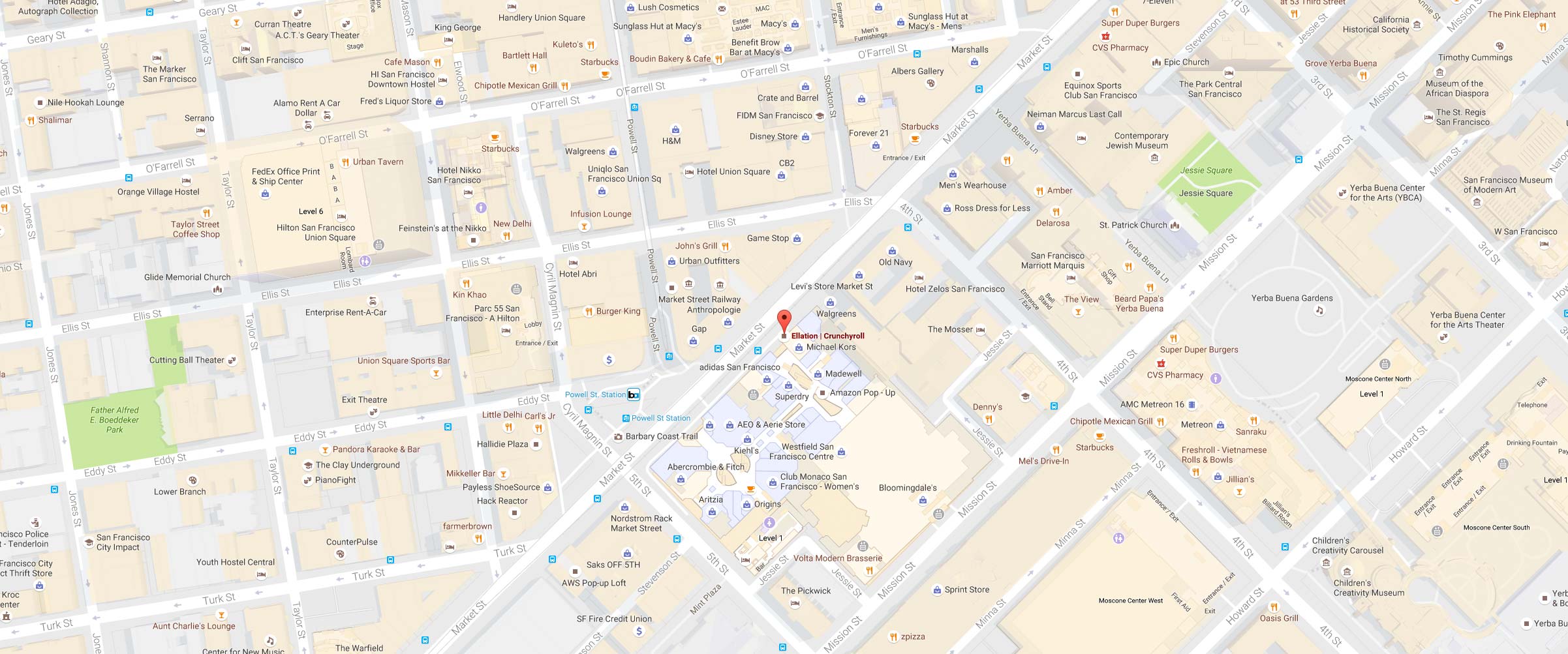
About us
Demuxed is simply engineers talking about video technology. After two three years of chatting about video at the SF Video Technology Meetup , we've decided it's time for an engineer-first event with quality technical talks about video. Our focus is on video delivered over the web, but topics cover anything from encoding to playback and more!
Who's organizing this?
Most of the boring work is done by folks from Mux (any resemblance in name is purely coincidental), but there was an amazing group of people from the meetup dubbed the "Braintrust." This crew gets together and talks through the submissions, argues heatedly over which talk submissions should make the final cut, and helps plan the final schedule.
This event is run with the help of the members of the SF Video Technology Meetup. We're incredibly lucky to have a community of engineers that work on some of the best video products on the web.
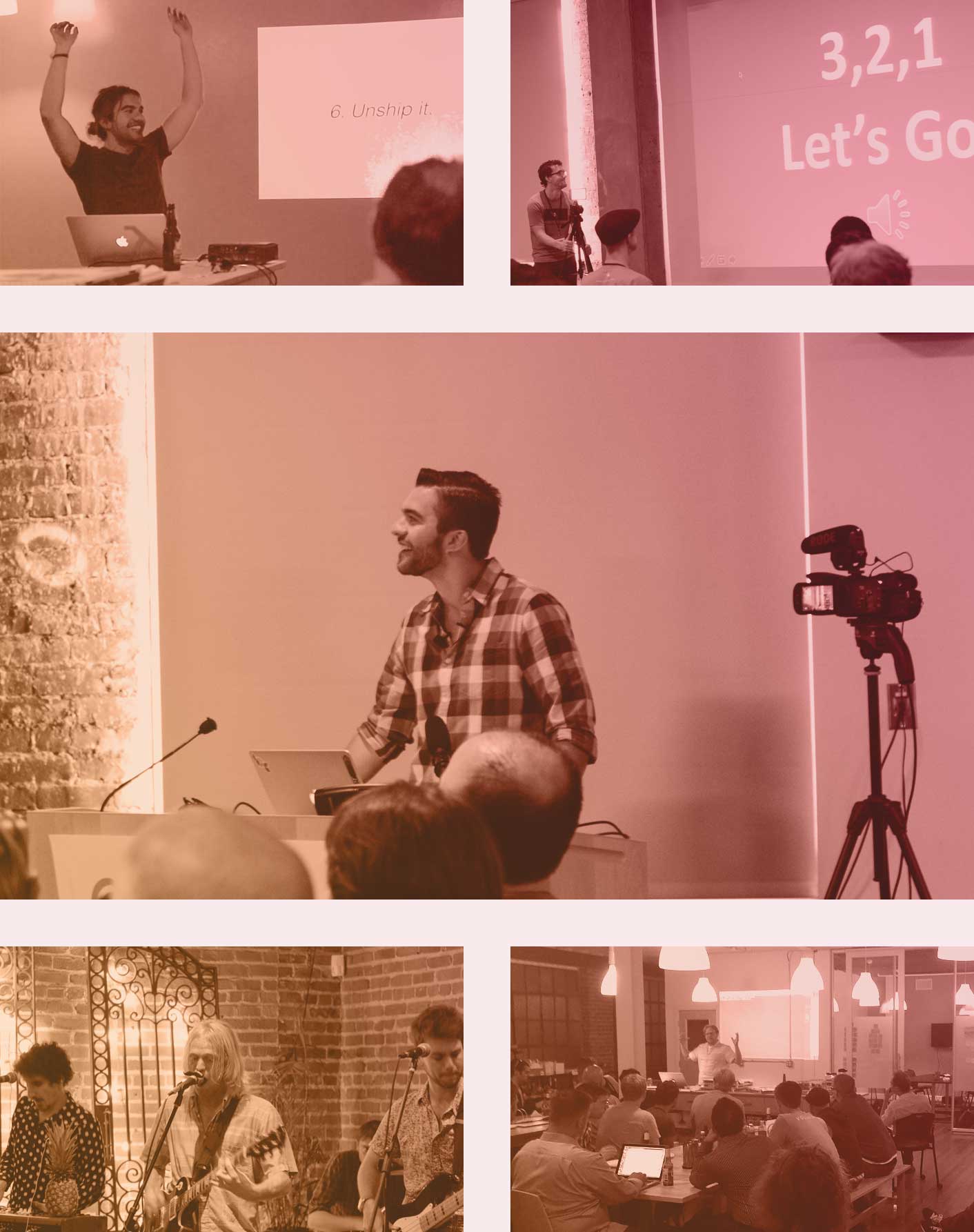
Our Guiding Principles
-
No Marketing
Speakers are selected based on merit, not how much money their company paid. To be clear, that means speaking slots aren't for sale. Attendee information is also not for sale, and that includes any sponsors.
-
Affordable
We want anyone in the industry to be able to come, keeping tickets reasonably priced through amazing sponsors and backing from our employers. Working on a great open source project that can't afford to send you? Please reach out and we'll find a ticket for you.
-
For Everyone in the Industry
In keeping with our love for reasonable standards, we're adopting the Conf Code of Conduct for the event. If you have any questions or concerns, please speak to any of our volunteers, organizers, or email us directly.
-
Community
We strive for high quality, technical content, but just as importantly we're trying to use these events to strengthen our community of video engineers, both in the Bay and at large.
After Party
When the dust has settled and the talks are done, Brightcove is hosting a conference party at Mr. Smith's within walking distance of Ellation. The conference schedule is pretty packed, so this is the perfect time to catch up with all your fellow attendees. We'll have heavy appetizers and an open bar until the tab runs out or the bar kicks us out.
The only thing you need to get in is your badge, so make sure to bring it with you! Plus ones are welcome, but they either need to meet you at the door to get a wristband or have a wristband in advance.
Sponsored by













